-
EXECUTIVE SUMMARY
-
Market Attractiveness Analysis
- Global Aortic Valve Market, by Valve Type
- Global Aortic Valve Market, by Type
- Global Aortic Valve Market, by End User
- Global Aortic Valve Market, by Region
-
MARKET INTRODUCTION
-
Definition
-
Scope of the Study
- Research Objective
- Assumptions
- Limitations
-
RESEARCH METHODOLOGY
-
Overview
-
Data Mining
-
Secondary Research
-
Primary Research
- Breakdown of Primary Respondents
-
Forecasting Techniques
-
Research Methodology for Market Size Estimation
- Bottom-Up Approach
- Top-Down Approach
-
Data Triangulation
-
Validation
-
MARKET DYNAMICS
-
Overview
-
Drivers
-
Restraints
-
Opportunities
-
MARKET FACTOR ANALYSIS
-
Porter’s Five Forces Analysis
- Bargaining Power of Suppliers
- Bargaining Power of Buyers
- Threat of New Entrants
- Threat of Substitutes
- Intensity of Rivalry
-
Value Chain Analysis
- R&D and Designing
- Manufacturing
- Distribution & Sales
- Post Sales Services
-
GLOBAL AORTIC VALVE MARKET, BY VALVE TYPE
-
Overview
-
Mechanical
-
Market Estimates & Forecast, by Region, 2023-2032
-
Market Estimates & Forecast, by Country, 2023-2032
-
Biological
-
Market Estimates & Forecast, by Region, 2023-2032
-
Market Estimates & Forecast, by Country, 2023-2032
-
GLOBAL AORTIC VALVE MARKET, BY TYPE
-
Overview
-
Suture
-
Market Estimates & Forecast, by Region, 2023-2032
-
Market Estimates & Forecast, by Country, 2023-2032
-
Sutureless
-
Market Estimates & Forecast, by Region, 2023-2032
-
Market Estimates & Forecast, by Country, 2023-2032
-
GLOBAL AORTIC VALVE MARKET, BY SURGERY TYPE
-
Overview
-
Minimally invasive surgeries
- Transfemoral
-
Market Estimates & Forecast, by Region, 2023-2032
-
Market Estimates & Forecast, by Country, 2023-2032
-
Transaortic Implantation
-
Market Estimates & Forecast, by Region, 2023-2032
-
Market Estimates & Forecast, by Country, 2023-2032
-
Transapical
-
Market Estimates & Forecast, by Region, 2023-2032
-
Market Estimates & Forecast, by Country, 2023-2032
-
Trans-subclavian
-
Market Estimates & Forecast, by Region, 2023-2032
-
Market Estimates & Forecast, by Country, 2023-2032
-
Open surgery
-
Market Estimates & Forecast, by Region, 2023-2032
-
Market Estimates & Forecast, by Country, 2023-2032
-
GLOBAL AORTIC VALVE MARKET, BY END USER
-
Overview
-
Hospitals
-
Market Estimates & Forecast, by Region, 2023-2032
-
Market Estimates & Forecast, by Country, 2023-2032
-
Ambulatory Surgery Centers
-
Market Estimates & Forecast, by Region, 2023-2032
-
Market Estimates & Forecast, by Country, 2023-2032
-
Others
-
Market Estimates & Forecast, by Region, 2023-2032
-
Market Estimates & Forecast, by Country, 2023-2032
-
GLOBAL AORTIC VALVE MARKET, BY REGION
-
Overview
-
Americas
- North America
- Latin America
-
Europe
- Western Europe
- Eastern Europe
-
Asia-Pacific
- Japan
- China
- India
- Australia
- South Korea
- Rest of Asia-Pacific
-
Middle East & Africa
- Middle East
- Africa
-
COMPANY LANDSCAPE
-
Overview
-
Competitor Dashboard
-
Major Growth Strategy in the Global Aortic Valve Market
-
Competitive Benchmarking
-
The Leading Player in terms of Number of Developments in the Global Aortic Valve Market
-
Key Developments & Growth Strategies
- New Product Type Launch/Service Deployment
- Merger & Acquisition
- Joint Ventures
-
Major Players Financial Matrix & Market Ratio
- Sales & Operating Income 2023
- Major Players R&D Expenditure 2023
-
COMPANY PROFILES
-
Boston Scientific Corporation
- Company Overview
- Product Types/Services Offered
- Financial Overview
- Key Developments
- SWOT Analysis
- Key Strategies
-
Medtronic
-
Abbott laboratories
-
LivaNova PLC
-
Edwards Lifesciences Corporation
-
CryoLife
-
Biotronik
-
Colibri Heart Valve
-
JenaValve
-
TTK HealthCare
-
Others
-
APPENDIX
-
References
-
Related Reports
-
NOTE:
-
This table of content is tentative and subject to change as the research progresses.
-
In section 11, only the top 10 companies will be profiled. Each company will be profiled based on the Market Overview, Financials, Product Type Portfolio, Business Strategies, and Recent Developments parameters.
-
Please note: The financial details of the company cannot be provided if the information is not available in the public domain and or from reliable sources.
-
LIST OF TABLES
-
GLOBAL AORTIC VALVE MARKET SYNOPSIS, 2023-2032
-
GLOBAL AORTIC VALVE MARKET ESTIMATES & FORECAST, 2023-2032 (USD MILLION)
-
GLOBAL AORTIC VALVE MARKET, BY VALVE TYPE, 2023-2032 (USD MILLION)
-
GLOBAL AORTIC VALVE MARKET, BY TYPE, 2023-2032 (USD MILLION)
-
GLOBAL AORTIC VALVE MARKET, BY SURGERY TYPE, 2023-2032 (USD MILLION)
-
GLOBAL AORTIC VALVE MARKET, BY END USER, 2023-2032 (USD MILLION)
-
GLOBAL AORTIC VALVE MARKET, BY REGION, 2023-2032 (USD MILLION)
-
NORTH AMERICA: AORTIC VALVE MARKET, BY VALVE TYPE, 2023-2032 (USD MILLION)
-
NORTH AMERICA: AORTIC VALVE MARKET, BY TYPE, 2023-2032 (USD MILLION)
-
NORTH AMERICA: AORTIC VALVE MARKET, BY SURGERY TYPE, 2023-2032 (USD MILLION)
-
NORTH AMERICA: AORTIC VALVE MARKET, BY END USER, 2023-2032 (USD MILLION)
-
US: AORTIC VALVE MARKET, BY VALVE TYPE, 2023-2032 (USD MILLION)
-
US: AORTIC VALVE MARKET, BY TYPE, 2023-2032 (USD MILLION)
-
US: AORTIC VALVE MARKET, BY SURGERY TYPE, 2023-2032 (USD MILLION)
-
US: AORTIC VALVE MARKET, BY END USER, 2023-2032 (USD MILLION)
-
CANADA: AORTIC VALVE MARKET, BY VALVE TYPE, 2023-2032 (USD MILLION)
-
CANADA: AORTIC VALVE MARKET, BY TYPE 2023-2032 (USD MILLION)
-
CANADA: AORTIC VALVE MARKET, BY SURGERY TYPE 2023-2032 (USD MILLION)
-
CANADA: AORTIC VALVE MARKET, BY END USER, 2023-2032 (USD MILLION)
-
LATIN AMERICA: AORTIC VALVE MARKET, BY VALVE TYPE, 2023-2032 (USD MILLION)
-
LATIN AMERICA: AORTIC VALVE MARKET, BY TYPE, 2023-2032 (USD MILLION)
-
LATIN AMERICA: AORTIC VALVE MARKET, BY SURGERY TYPE, 2023-2032 (USD MILLION)
-
LATIN AMERICA: AORTIC VALVE MARKET, BY END USER, 2023-2032 (USD MILLION)
-
EUROPE: AORTIC VALVE MARKET, BY VALVE TYPE, 2023-2032 (USD MILLION)
-
EUROPE: AORTIC VALVE MARKET, BY TYPE, 2023-2032 (USD MILLION)
-
EUROPE: AORTIC VALVE MARKET, BY SURGERY TYPE, 2023-2032 (USD MILLION)
-
EUROPE: AORTIC VALVE MARKET, BY END USER, 2023-2032 (USD MILLION)
-
WESTERN EUROPE: AORTIC VALVE MARKET, BY VALVE TYPE, 2023-2032 (USD MILLION)
-
WESTERN EUROPE: AORTIC VALVE MARKET, BY TYPE 2023-2032 (USD MILLION)
-
WESTERN EUROPE: AORTIC VALVE MARKET, BY SURGERY TYPE 2023-2032 (USD MILLION)
-
WESTERN EUROPE: AORTIC VALVE MARKET, BY END USER, 2023-2032 (USD MILLION)
-
EASTERN EUROPE: AORTIC VALVE MARKET, BY VALVE TYPE, 2023-2032 (USD MILLION)
-
EASTERN EUROPE: AORTIC VALVE MARKET, BY TYPE 2023-2032 (USD MILLION)
-
EASTERN EUROPE: AORTIC VALVE MARKET, BY SURGERY TYPE 2023-2032 (USD MILLION)
-
EASTERN EUROPE: AORTIC VALVE MARKET, BY END USER, 2023-2032 (USD MILLION)
-
ASIA-PACIFIC: AORTIC VALVE MARKET, BY VALVE TYPE, 2023-2032 (USD MILLION)
-
ASIA-PACIFIC: AORTIC VALVE MARKET, BY TYPE, 2023-2032 (USD MILLION)
-
ASIA-PACIFIC: AORTIC VALVE MARKET, BY SURGERY TYPE, 2023-2032 (USD MILLION)
-
ASIA-PACIFIC: AORTIC VALVE MARKET, BY END USER, 2023-2032 (USD MILLION)
-
MIDDLE EAST & AFRICA: AORTIC VALVE MARKET, BY VALVE TYPE, 2023-2032 (USD MILLION)
-
MIDDLE EAST & AFRICA: AORTIC VALVE MARKET, BY TYPE, 2023-2032 (USD MILLION)
-
MIDDLE EAST & AFRICA: AORTIC VALVE MARKET, BY SURGERY TYPE, 2023-2032 (USD MILLION)
-
MIDDLE EAST & AFRICA: AORTIC VALVE MARKET, BY END USER, 2023-2032 (USD MILLION)
-
-
LIST OF FIGURES
-
RESEARCH PROCESS
-
MARKET STRUCTURE FOR THE GLOBAL AORTIC VALVE MARKET
-
MARKET DYNAMICS FOR THE GLOBAL AORTIC VALVE MARKET
-
GLOBAL AORTIC VALVE MARKET SHARE, BY VALVE TYPE, 2023 (%)
-
GLOBAL AORTIC VALVE MARKET SHARE, BY TYPE 2023 (%)
-
GLOBAL AORTIC VALVE MARKET SHARE, BY SURGERY TYPE 2023 (%)
-
GLOBAL AORTIC VALVE MARKET SHARE, BY END USER 2023 (%)
-
GLOBAL AORTIC VALVE MARKET SHARE, BY REGION, 2023 (%)
-
AMERICAS: AORTIC VALVE MARKET SHARE BY REGION, 2023 (%)
-
NORTH AMERICA: AORTIC VALVE MARKET SHARE, BY COUNTRY, 2023 (%)
-
EUROPE: AORTIC VALVE MARKET SHARE, BY REGION, 2023 (%)
-
WESTERN EUROPE: AORTIC VALVE MARKET SHARE, BY COUNTRY, 2023 (%)
-
ASIA-PACIFIC: AORTIC VALVE MARKET SHARE, BY COUNTRY, 2023 (%)
-
MIDDLE EAST & AFRICA: AORTIC VALVE MARKET SHARE, BY COUNTRY, 2023 (%)
-
GLOBAL AORTIC VALVE MARKET: COMPANY SHARE ANALYSIS, 2023 (%)
-
BOSTON SCIENTIFIC CORPORATION: KEY FINANCIALS
-
BOSTON SCIENTIFIC CORPORATION: SEGMENTAL REVENUE
-
BOSTON SCIENTIFIC CORPORATION: REGIONAL REVENUE
-
MEDTRONIC: KEY FINANCIALS
-
MEDTRONIC: SEGMENTAL REVENUE
-
MEDTRONIC: REGIONAL REVENUE
-
ABBOTT LABORATORIES: KEY FINANCIALS
-
ABBOTT LABORATORIES: SEGMENTAL REVENUE
-
ABBOTT LABORATORIES: REGIONAL REVENUE
-
LIVANOVA PLC: KEY FINANCIALS
-
LIVANOVA PLC: SEGMENTAL REVENUE
-
LIVANOVA PLC: REGIONAL REVENUE
-
EDWARDS LIFESCIENCES CORPORATION: KEY FINANCIALS
-
EDWARDS LIFESCIENCES CORPORATION: SEGMENTAL REVENUE
-
EDWARDS LIFESCIENCES CORPORATION: REGIONAL REVENUE
-
CRYOLIFE: KEY FINANCIALS
-
CRYOLIFE: SEGMENTAL REVENUE
-
CRYOLIFE: REGIONAL REVENUE
-
BIOTRONIK: KEY FINANCIALS
-
BIOTRONIK: SEGMENTAL REVENUE
-
BIOTRONIK: REGIONAL REVENUE
-
COLIBRI HEART VALVE: KEY FINANCIALS
-
COLIBRI HEART VALVE: SEGMENTAL REVENUE
-
COLIBRI HEART VALVE: REGIONAL REVENUE
-
JENAVALVE KEY FINANCIALS
-
JENAVALVE: SEGMENTAL REVENUE
-
JENAVALVE: REGIONAL REVENUE
-
TTK HEALTHCARE: KEY FINANCIALS
-
TTK HEALTHCARE: SEGMENTAL REVENUE
-
TTK HEALTHCARE: REGIONAL REVENUE

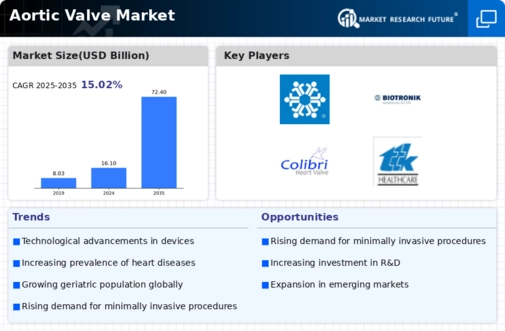
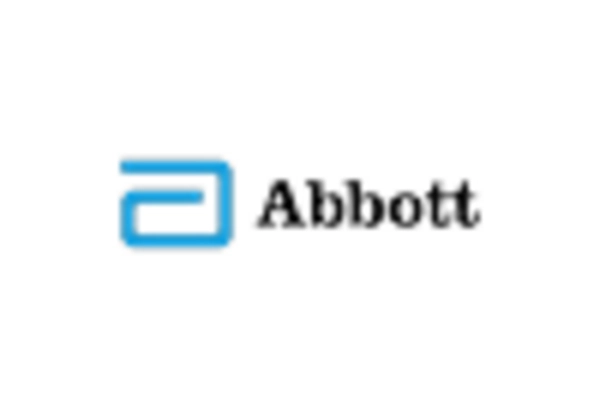
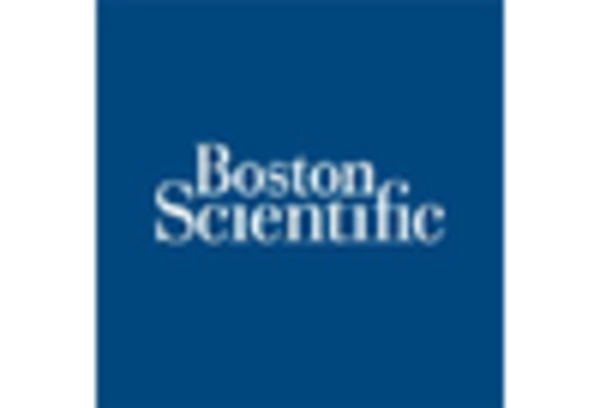
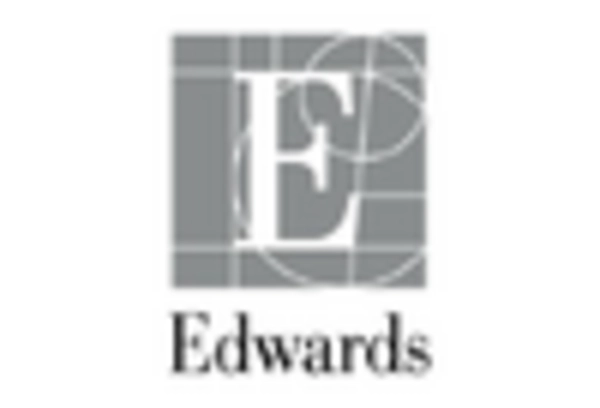
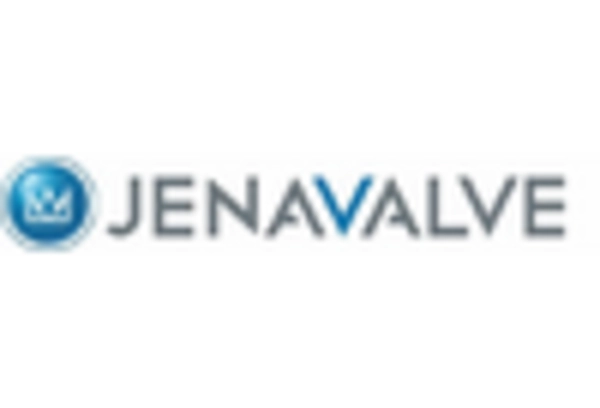
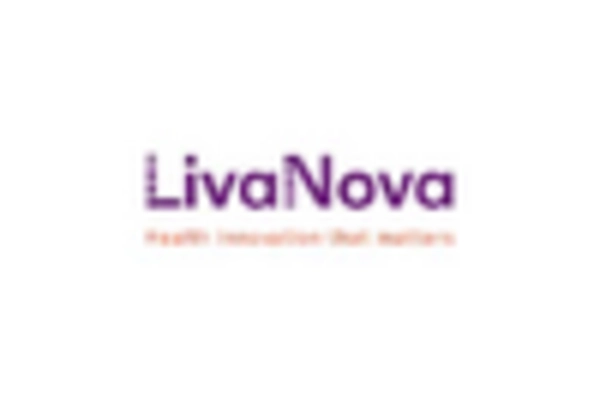


Leave a Comment